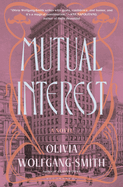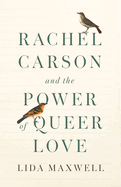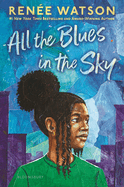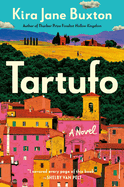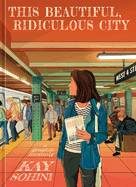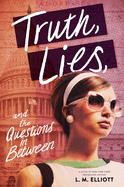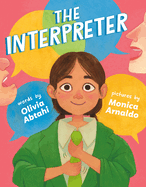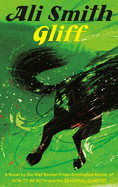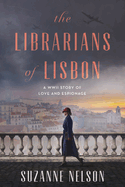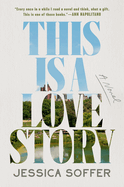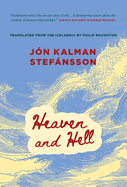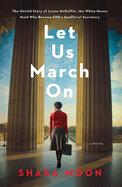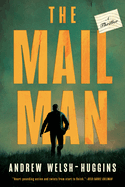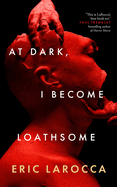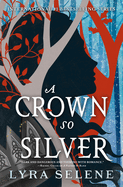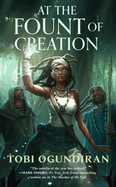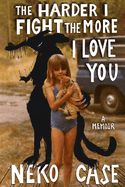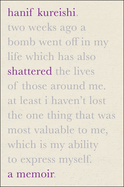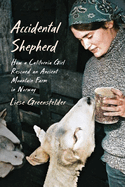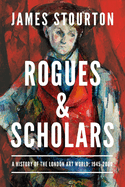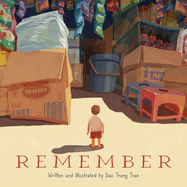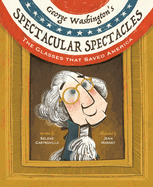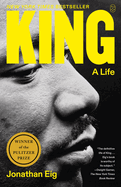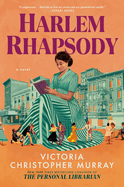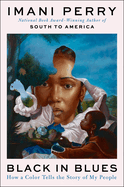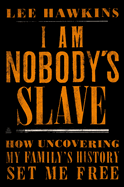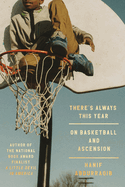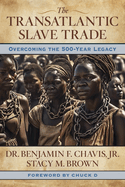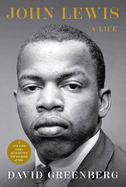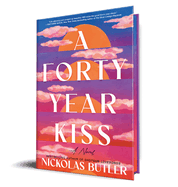Friday, February 7, 2025
One theme that stands out among many of today's excellent reading recommendations deals with the indelible bonds people form with each other and the places they love. In the poignant and gorgeous graphic memoir This Beautiful, Ridiculous City, Kay Sohini details her fixation on New York City and the allure it held for her, even during her youth in Calcutta. Lida Maxwell's biography Rachel Carson and the Power of Queer Love is "an ode to the freedom and joy" that examines the relationship that bolstered the environmentalist's views on nature and political activism. And Coretta Scott King Award winner and Newbery Honoree Renée Watson crafts "an intimate, intense portrayal of grief" in All the Blues in the Sky, blending poetry and lyrical prose to tell an "achingly beautiful" story about a friendship cut short by death.
Meanwhile, in The Writer's Life, Olivia Wolfgang-Smith, author of Glassworks, introduces her second novel, Mutual Interest, a "sure-footed" historical tale about queer characters immersed in the "rough-and-tumble capitalist quagmire" of turn-of-the-century New York City.
Mutual Interest
by Olivia Wolfgang-Smith
Readers of well-crafted historical fiction such as Trust by Hernan Diaz will be drawn in by Olivia Wolfgang-Smith's sure-footed Mutual Interest, which is set in turn-of-the century Manhattan, in the aftermath of the Gilded Age, with occasional excursions to Hollywood, Calif., and Utica, N.Y. Wolfgang-Smith (Glassworks) is nothing short of virtuosic in her wry and witty world-building, which immediately immerses readers into a rough-and-tumble capitalist quagmire where the stakes are incredibly high and safety nets are totally absent.
Vivian Lesperance realizes that if she's going to survive with her limited prospects, she must rely on her charm and manipulative abilities, primarily with the women she seduces, who provide her with economic support for a time. But when that time is clearly up, Vivian needs a new plan, which she finds in the form of awkward, sexually surreptitious, socially ascendent Midwestern transplant Oscar Schmidt.
Vivian assists Oscar in navigating the competitive waters of his business and muffles the potential reputational damage of both of their same-sex adventures by marrying him. Her skills are such that she manages to provide Oscar with professional and romantic riches via his business rival, Squire Clancy, another misfit, though one from a higher social class. Their three-way alliance yields enormous benefits for all, but threats to the home they've so carefully constructed for themselves loom--blackmail, social expectation, and justified labor unrest.
This is a novel of families won and lost, love, envy, and betrayal told in a remarkably fresh and entertaining way, with immersive period detail and compelling emotional stakes. Mutual Interest is essential reading for lovers of historical and accessible literary fiction. --Elizabeth DeNoma, executive editor, DeNoma Literary Services, Seattle, Wash.
Discover: Olivia Wolfgang-Smith's Mutual Interest is the best of what historical fiction can be: immersive, enlightening, entertaining, and deeply engaging.
Tartufo
by Kira Jane Buxton
A tiny Italian village facing destitution catches a whiff of hope in the vivacious, feel-good comedy Tartufo by Kira Jane Buxton (Hollow Kingdom, Feral Creatures).
The village of Lazzarini Boscarino has seen better days. Tourists only come into town if they're lost, and all the bars and restaurants have closed save Bar Celebrità, which "could perhaps use one of the potent espressos made by its bartender." The village's first female mayor, Delizia--who narrowly won the election against "a donkey of legal drinking age"--faces the unenviable task of telling her constituents that the village is on the verge of bankruptcy. Then local truffle hunter Giovanni's prized truffle dog, Aria, unearths an amazing surprise: a white truffle of record size, worth more than its weight in gold. The sale of this astonishing fungus could save Lazzarini Boscarino, but the drama and upheaval caused by its discovery ripples through the villagers' lives and relationships, and may leave the village with little to save. A stolen key, a missing person, and a dubious psychic foretelling add to the turmoil.
Buxton's prose meanders through poetic descriptive passages like a traveler taking a stroll through a wood dappled with golden Italian sunlight. The sheer hilarity of her characterizations and situations stands in striking, brilliant counterpoint to the sophistication of the imagery. Readers see the story's action through many points of view, from the main human characters to the animals and wildlife who inhabit Lazzarini Boscarino. This Tuscan romp is best savored over Chianti or espresso with friends who like to hear funny passages read aloud. --Jaclyn Fulwood, blogger at Infinite Reads
Discover: A ragtag group of villagers attempts to save their dying community with a rare, valuable truffle in this vivacious, feel-good comedy.
Gliff
by Ali Smith
The joy and surprise of finally encountering a long-celebrated writer feels almost physical--a sharp reminder of all the great work that could so easily get missed. For a newcomer, reading Gliff by Booker Prize-nominated Ali Smith (Autumn; How to Be Both) is like that. This is a marvel of a book, a tale that manages both to distill and distort the present to project a sobering yet hopeful view to an uncanny future where surveillance is king and one's personal data determines their fate.
At the start, Gliff is a bit like peering in the windows of a house and finding familiar furniture and people and languages being spoken, but none of it makes sense. Smith's luminous prose keeps readers from turning away, and they instead remain locked on a scene that, to Smith's great credit, does become clear--startlingly so. Until then, the reader must wonder: Who are these children? Why must their mother work in this fancy hotel? And why must they quiet their questions and leave her there, departing "like we were guests who'd been quite nice to her" as she hugs them "separately, polite, goodbye"?
These will not be the only questions, of course. Repeatedly, the tale establishes something that seems utterly foreign until the moment it clicks into place as a very possible reality in the future. Rather than being terrifying, however, Gliff is driven by an energetic hope for better, standing in reckless defiance of the very picture it paints. A challenging book in every sense of the word, Gliff is tremendously clever and equally full of heart. Read it and think. --Sara Beth West, freelance reviewer and librarian
Discover: Ali Smith's Gliff projects an uncanny near future where everything feels foreign yet eerily familiar, offering an inventive resistance to the creep of big tech and data harvesting so common today.
The Librarians of Lisbon
by Suzanne Nelson
Suzanne Nelson's riveting first work of adult fiction, The Librarians of Lisbon, follows two best friends from the United States who find themselves in Portugal's ostensibly neutral capital city during World War II, working by day as librarians and by night on differing covert missions. Despite their deep friendship and fierce loyalty to each other, there's much Bea and Selene can no longer share, and the men they are drawn to have secrets of their own.
Nelson (A Batch Made in Heaven) draws on wartime archives and historical figures to craft her narrative. She alternates between the perspectives of daring, confident Selene and cautious, methodical Bea--polar opposites who became friends back in Boston, Mass., and are now an ocean away from home, working day jobs that employ their analytical and organizational skills, and attempting to infiltrate the Axis spy network in their off-hours. For Selene, this means attending glittering events in the company of disgraced cabinet member Luca Caldeira, and trying to curry favor with the wealthy mistresses of other important men. For Bea, it means many hours spent in a secret underground room, where she reviews intelligence (and makes use of her photographic memory) and tussles with the enigmatic Gable, a skilled double agent whose knowledge and scars run deep.
Nelson skillfully builds her suspense and raises the emotional stakes, leaving her two librarians--and readers--racing toward the final confrontation. Layered with Portuguese phrases, sparkling evening gowns, and details of World War II spy craft, The Librarians of Lisbon is a gripping espionage thriller and an emotionally nuanced tribute to a lifelong friendship. --Katie Noah Gibson, blogger at Cakes, Tea and Dreams
Discover: Suzanne Nelson's gripping adult fiction debut follows two best friends working as librarians and covert agents in neutral Portugal during World War II.
This Is a Love Story
by Jessica Soffer
While passionate love affairs are standard fictional fare, the more quotidian stories of long marriages don't often possess the same literary appeal. Some readers may reevaluate that assessment after reading Jessica Soffer's This Is a Love Story, a realistic and affecting account of how one couple's bond endures in the face of life's inevitable challenges.
Soffer (Tomorrow There Will Be Apricots) tells the story of New Yorkers Abe and Jane. He's a novelist and poet who's managed to pair a successful writing career with a job in his family's textile business; she's an equally talented artist. In chapters that loop through time from their first meeting at Tavern on the Green in 1967 to the long days, decades later, when Jane is dying after a recurrence of cancer, Soffer explores Abe's brush with infidelity, Jane's postpartum depression after the birth of their son, Max, and the arcs of their respective artistic careers that oscillate between the poles of mutual support and occasional professional jealousy. Soffer periodically leaves this talented but in many ways unexceptional family for visits to Central Park, the site "where the most important moments of their lives have taken place." These chapters touch on the history of the park, the idiosyncrasies of some its current denizens, and more, offering the opportunity for some of the novel's most evocative writing.
In the end, Abe observes that "there has never been fault between us. Or at least never anything specific. You were. I was. We have always just been water, slipping through holes." In a sense, any attempt at summing up a long-term marriage is destined to fail. But in the case of Abe and Jane, it's a lovely and fitting benediction to an emotionally resonant story of their inextricably paired lives. ---Harvey Freedenberg, freelance reviewer
Discover: Jessica Soffer's second novel is an honest, affecting story of a long-time marriage.
Heaven and Hell
by Jón Kalman Stefánsson, transl. by Philip Roughton
Jón Kalman Stefánsson (Your Absence Is Darkness) published Heaven and Hell in his native Iceland in 2008. This evocative English translation by Philip Roughton is sure to reinvigorate interest in this first volume of a trilogy that follows an unnamed young man navigating life after loss. Like the short fishing expedition at the center of the protagonist's experience, the novel is slight but contains unexpected depths. In fact, much of the lyrical text will put readers in mind of the sea or a deceptive fall of water that seems to tumble lightly over rock while containing an icy force.
The novel opens with a sort of invocation entitled "We Are Nearly Darkness," which establishes the narrative voice, a chorus of storytellers and memory keepers who "know a little about life and a little about death, and can tell of it: we come all this way to touch you, to set fate in motion." Heaven and Hell then follows the boy and his companion, Bárður, as they and their small crew prepare to go to sea, bringing along a borrowed copy of John Milton's Paradise Lost. Stefánsson's long clauses, endlessly rocking one to the next, inhabit the rhythm of the ocean, and while his plot is thin, it raises profound questions such as, "If only existence were always so direct and easily readable, if only we could escape the uncertainty that reaches out over graves and death. But what softens uncertainty if death does not?" This beautiful novel provides a reminder of the smallness of humanity and the power of community--and of words--to keep the darkness at bay. --Sara Beth West, freelance reviewer and librarian
Discover: Icelandic novelist Jón Kalman Stefánsson's evocative first volume in a trilogy raises profound questions about death, life, and uncertainty on short fishing expedition.
Let Us March On
by Shara Moon
Shara Moon's thoughtful debut novel, Let Us March On, provides a distinctive perspective on the U.S. civil rights movement through the voice of Elizabeth "Lizzie" McDuffie, a real historical figure who spent 12 years working for President Franklin Delano Roosevelt as a maid and unofficial civil rights liaison. Narrated by Lizzie, the novel traces the major events of Roosevelt's time in office and examines the long struggle for Black Americans to live freely and without fear.
Moon takes readers inside FDR's White House, sharing the day-to-day experiences of Lizzie and her husband, Mac, who worked as Roosevelt's personal valet for years. Although Mac is hesitant to push the president on civil rights issues, Lizzie feels the weight of their position as a Black couple who have FDR's ear. As she receives hundreds of letters from fellow Black Americans, Lizzie shares their concerns with the president and his wife, Eleanor, eventually becoming FDR's "SASOCPA" ("self-appointed secretary on colored people's affairs"). She even makes a few campaign appearances when FDR decides to run for a second term.
Moon's narrative brings the Great Depression to life through Lizzie's sharp-eyed observations and her deep regard for the president and his family, and the letters from ordinary Americans struggling to make their voices heard. Moon deftly depicts how Lizzie balances her housekeeping duties, her civil rights work, and her loving but complicated marriage to Mac. Let Us March On is a compelling portrait of a woman determined to fight for her people and serve her country with integrity and grace. --Katie Noah Gibson, blogger at Cakes, Tea and Dreams
Discover: Shara Moon's compelling debut novel highlights the story of Lizzie McDuffie, who worked as a maid and civil rights activist in Franklin Delano Roosevelt's White House
Mystery & Thriller
The Mailman
by Andrew Welsh-Huggins
Former postal inspection agent-turned-freelance courier Mercury "Merc" Carter is the most unlikely of action heroes in The Mailman, Andrew Welsh-Huggins's energetic series launch.
Four masked criminals are holding Rachel Stanfield and her husband, Glenn, captive in their suburban Indianapolis home. They're willing to torture, even kill, Rachel unless she tells them the whereabouts of Stella Wolford, a low-level employee who recently gave a deposition for a lawsuit at Rachel's firm. They refuse to believe Rachel doesn't know. When the "shrimpy" Merc arrives to deliver a package, his surprise appearance is an inconvenience but this ruthless gang, who pride themselves on being "the best of the worst," think they will dispatch him easily. They are wrong. Merc insists he must deliver his package only to Rachel: "I'm a guy who delivers stuff. Occasionally, things get complicated." Merc incapacitates the gang one by one, but they still manage to escape, taking Rachel hostage, and leaving Merc and Glenn to embark on a cross-country pursuit.
Welsh-Huggins's sharp plotting is propulsive, and The Mailman's high-adrenaline pace never lets up. He weaves in historical background about the United States Postal Inspection Service being one of the country's oldest police divisions and how its agents can carry guns, giving The Mailman a dose of realism. Merc's intelligence and ability to adapt to violent situations without going over the top carry The Mailman. Merc has much in common with Jack Reacher and Colter Shaw, but Welsh-Huggins makes him a distinct character. --Oline H. Cogdill, freelance reviewer
Discover: A former postal inspector turned freelance courier proves to be an intelligent action hero in this solid, exciting series launch.
Science Fiction & Fantasy
At Dark, I Become Loathsome
by Eric LaRocca
In At Dark, I Become Loathsome, a grotesque yet moving horror novel from Eric LaRocca (You've Lost a Lot of Blood), the conductor of a macabre ritual to help those contemplating suicide forms a disturbing connection with a potential subject.
Ashley Lutin has always considered himself to be a "horrible creature," and he has only sunk more deeply into darkness in the years since his wife died and his young son went missing. A "self-loathing bisexual," Ashley worries that he may have driven his son away with his fears that the boy might be gay--"I just didn't want him to be like me." To help others who have often "thought that the world would be a better place without [them]," he has created a " 'fake death' ritual," through which they can confront death by being buried alive. But not long after receiving news about his son's disappearance, Ashley is approached by a new client who tells him a story that both revolts and intrigues him. He begins to lose the careful balance that has contained his self-described loathsomeness in the dark.
An expert in body horror, LaRocca skillfully uses the unsettling stories that fascinate Ashley to drive home the ugly burden of guilt he feels over his son's fate and his own sexuality. As Ashley careens out of control, readers will be breathless and on the edge of their seats, waiting to find out whether the truth will set him free. --Kristen Allen-Vogel, information services librarian at Dayton Metro Library
Discover: The creator of a ritual that helps people confront death finds himself losing ground to his own demons in this shocking body horror novel by Eric LaRocca.
A Crown So Silver
by Lyra Selene
A Crown So Silver, the second installment in the Fair Folk series by Lyra Selene (A Feather So Black), continues the breathtakingly adventurous and sexy story of a young woman caught between the worlds of humans and the Folk.
Fia was supposed to die on the night of the Ember Moon. Instead, she was reborn and inherited a lost Folk artifact, the Treasure of the Sept of Antlers, which results in a "riot of new, powerful magic roaring through [her]." Fia's husband, the devastatingly gorgeous Folk lord Irian, adores her, but his fear for her manifests in overprotective tendencies that Fia finds frustrating. She's spoiling for battle against her sister, Eala, who has seized control of the gates to the human world. Irian suggests they journey to the Silver Isle, a wintry island ruled by a smith-king. Fia agrees, believing they will ask the king to reforge the remaining lost Treasures to help them defeat Eala. But after they reach the island, Irian instead asks the smith-king to destroy the existing Treasures. A dangerous magical tournament, Eala's own arrival to the Silver Isle, and an explosive secret will test Fia and Irian's love, win them new allies, and change the struggle for the Folk world in unimaginable ways.
In A Crown So Silver, Selene expands her lush fantasy setting, bumps the romance from steamy to scalding, and brings new friends and enemies into Fia's path. The prose remains as dreamy and poetic as in the first book, and the ending sets up a dramatic twist that will leave readers clamoring to get their hands on the next volume. --Jaclyn Fulwood, blogger at Infinite Reads
Discover: Author Lyra Selene continues to build a lush, dangerous fantasy realm in this sexy, breathtaking follow-up to A Feather So Black.
At the Fount of Creation
by Tobi Ogundiran
At the Fount of Creation, the second installment in Tobi Ogundiran's Guardian of the Gods duology, ratchets up the action in the fight to save the orisha--and the world. But as the adventure unfolds, a question arises: Are the orisha really worth saving?
The narrative picks up shortly after In the Shadow of the Fall, the duology's first novella, ends. Again readers primarily follow Ashâke, but chapters from a few other perspectives are included, such as Djábri, a tortured soul who's still trying to do good. Ashâke has come far, maturing from childish acolyte to young woman working for the benefit of others. The narrative also spends time with the antagonists, adding depth by exploring their nuances. Each character is flawed and relatable in ways that will make readers care about their well-being.
This is a thoughtfully complex conclusion to the duology. It builds on the in-depth, Yoruba-inspired world Ogundiran established in the first volume. The system of gods and magic comes to life with expansive world-building and intriguing dynamics, complete with god-on-god conflict and a mysterious silver ore with magical properties. Several factions emerge, each full of distinct characters who clash fantastically with one another. The final conflict and the revelations it brings are riveting.
At the Fount of Creation--and the duology as a whole--is a fast-paced fantasy epic populated with relatable characters and cinematic action. It feels light and fun as it probes heavier themes of power, who deserves to have it, and what's warranted in the face of corruption. --Carol Caley, writer
Discover: The second installment of Tobi Ogundiran's fantasy duology ratchets up the action and thoughtfully questions the foundations of the first novella as it probes whether the orisha are worth saving.
Graphic Books
This Beautiful, Ridiculous City
by Kay Sohini
A probing, curious mind interrogates a fascination with New York City in Kay Sohini's gorgeously detailed debut graphic memoir, This Beautiful, Ridiculous City. Sohini, who holds a Ph.D. in English from Stony Brook University, explores her life to see how and why she became infatuated with New York, a city with which her "attachment can never be explained in the realm of the logical." She begins with an image that's repeated two more times later in the book: a plane sitting on the tarmac at JFK airport in the rain on her first night of the city, as she tries to make an inventory of what she's left behind. Each time, the refrain changes slightly, complicating the narrative.
The first chapter touches on literary greats, such as Sylvia Plath and Alison Bechdel, who helped shape her image of the city as a refuge for creatives. Then, Sohini dives into her formative years growing up in postcolonial India in a large family home in the suburbs of Calcutta. The book transcends autobiography through a collage-like assembling of cultural and historical context alongside the personal. For instance, India's rapid industrialization with her parents' decision to send her to a private, English-speaking school, which in turn becomes "the language [she] thought in," and "the language [she] understood the world through." All of which helps foster her attachment to things like Friends, which fed into her longing for New York, a place where she finally feels at home. This Beautiful, Ridiculous City is a poignant examining of New York as seen through an Indian immigrant's eyes and history. --Nina Semczuk, writer, editor, and illustrator
Discover: Graphic memoirist Kay Sohini crafts a poignant examination of the allures and contradictions of New York.
Biography & Memoir
The Harder I Fight the More I Love You
by Neko Case
As a Grammy-nominated singer-songwriter, visual artist, and member of The New Pornographers, Neko Case is unquestionably one of the most creative, versatile, and distinctive artists performing in the 21st century. With The Harder I Fight the More I Love You, she turns her singular talents to telling her own story, with haunting and profound results.
Case is fascinated by ghosts, and her memoir is filled with them. As a child, she faced heartbreaking and infuriating hardships, including being bounced between her young, "stressed and uninterested" parents, who were "poor as empty acorns" and utterly incapable of caring for her. That Case emerged relatively intact from these experiences is a marvel. Bighearted and compassionate, her telling captures how a person can make sense of her life and the people who care for her, however imperfectly--and the fact that some people can't. She writes, "[Forgiveness is] not a tiny golden diploma you bestow upon someone. Forgiveness takes many forms and may be as simple as the moment something no longer has power over you." Her humor and generosity with her younger self, as well as with the friends and family who helped her survive, are an expert demonstration in emotional intelligence and wisdom.
Music played a decisive role in how Case began to build her own identity, to connect with other like-minded people, and to forge her way into the world. Case emerges into the world and makes it her own, on whatever terms she can craft, and The Harder I Fight the More I Love You is a marvelous and moving memoir with an insistent, important perspective on the world. --Elizabeth DeNoma, executive editor, DeNoma Literary Services, Seattle, Wash.
Discover: With her memoir, musician Neko Case offers a deeply moving account of a life still in progress, and a portrait of the artist as a young woman.
Shattered: A Memoir
by Hanif Kureishi
A life of independence and literary renown is irrevocably altered in Shattered: A Memoir by British Pakistani novelist and screenwriter Hanif Kureishi. In a series of reflective, chucklesome, and sometimes brooding "dispatches" from his hospital bed, Kureishi narrates his consequential year of recovery after the Christmas 2022 fall and spinal injury that resulted in tetraplegia.
For Kureishi (The Buddha of Suburbia; The Nothing), a writer known for his irreverent humor and flair for capturing the gritty realities of life, the ability to express himself freely is his most precious asset. Here, readers will find his writerly talents in full bloom even as he must renegotiate all other aspects of his life.
Shattered opens in January 2023 at Rome's Gemelli Hospital. Kureishi was unable to move his limbs and communicated by dictating diary-like entries to his partner, Isabella, and his sons, Sachin, Carlo, and Kier, as they circled in and out of his hospital room. His immobility didn't stop Kureishi from appreciating the more farcical aspects of his medical care, including the time a nurse excitedly mistook him for Salman Rushdie.
Kureishi was not immune to "the rage of helplessness" but it didn't consume him. As he describes cappuccinos with a fellow patient and visits from friends, he recalls Great Britain's multiracial transformation during the 1960s and the influence his father, "a civil servant at the Pakistani Embassy in London," had on his career.
It is Isabella, devoted to and exhausted by his care, to whom Kureishi dedicates this memoir. He has faith they can find "a new way of loving each other." In spite of everything he has lost, Kureishi is determined to write. "It has never mattered to me more," he declares, accepting an astonishing new reality in which "all I have left is speech." --Shahina Piyarali
Discover: Acclaimed British Pakistani novelist and screenwriter Hanif Kureishi shares reflections and humorous observations from his hospital bed as he adjusts to his new life with tetraplegia.
Accidental Shepherd: How a California Girl Rescued an Ancient Mountain Farm in Norway
by Liese Greensfelder
Science writer Liese Greensfelder's memoir, Accidental Shepherd, gives a wry, affectionate account of the unexpected year she spent managing a remote mountain farm in Norway. Eager to learn about agricultural practices, Greensfelder traveled from California to Norway in 1972 to spend the summer working with a farmer named Johannes Hovland. Upon arrival, she discovered that Johannes had been hospitalized following a stroke. He asked 20-year-old Liese to watch over the farm for a few weeks--which turned into months. With help from her new neighbors (but no modern machinery), Liese plunged into the tasks of milking, caring for livestock, maintaining the farm, haying, and weeding Johannes's prized garden. Over the course of the year, she fell deeply in love with her new community of Hovland and its kind, hardworking people, who taught her to speak kvammamaol, their dialect of Norwegian, and generously shared their knowledge.
Greensfelder's narrative celebrates the beauty of western Norway and its mountains, meadows, fjords, farms, and remote cabins that were once frequented by budeier--shepherdesses who cared for free-ranging sheep and cows. She describes the farm's never-ending work, her deep sense of responsibility to Johannes's animals, and her growing confidence and skill. Amid the backbreaking work, however, Greensfelder also found joy: in summer hikes, cross-country skiing, local dances, and deep friendships with her neighbors, who answered her endless questions and embraced her as one of their own.
Packed with details of farming life and peppered with Norwegian vocabulary, Greensfelder's memoir is an intimate portrait of a vanished region and an evocative tribute to the community she came to love. --Katie Noah Gibson, blogger at Cakes, Tea and Dreams
Discover: Liese Greensfelder's memoir gives a wry, affectionate account of the year she spent managing a remote mountain farm in western Norway.
Nature & Environment
Rachel Carson and the Power of Queer Love
by Lida Maxwell
For most people, Rachel Carson is synonymous with her Silent Spring exposé of unregulated chemicals destroying the sustainability of American agriculture. In Rachel Carson and the Power of Queer Love, Boston University professor Lida Maxwell examines letters Carson exchanged with her intimate friend Dorothy Freeman and argues that Carson's environmentalism was inextricably intertwined with queer frameworks of love.
Maxwell draws on writers from many disciplines, including Black and queer studies, to elucidate how structures commonly thought of as inherent to human desire and relationships are shaped by white patriarchal capitalism. She demonstrates that ideologies of heteronormative love are based on self-shaming to distance oneself from supposed deviances, lack of utility in an ideal of love for its own sake, and separation between the political and the intimate. In the queer relationship Carson developed with Freeman during their time on Southport Island in Maine, these ideals of straight love are inverted. Unlike heteronormative ideas of naturally occurring love without purpose, Carson and Freeman are active creators of their love, which is a source and result of wonder rather than shame, characterized by "loving use" rather than the "using up" of capitalist consumption, and vital to Carson's commitment to nonhuman nature and political activism.
Maxwell brilliantly evokes emotions while making intellectual arguments, telling the story of Carson and Freeman's developing love through passionate excerpts from their letters and gorgeous descriptions of the land that served as the backdrop and companion to their love. Readers of all sexualities stand to gain tremendously from her work in every area of their lives. --Dainy Bernstein, freelance reviewer
Discover: Focusing on Carson's queer relationship and its links to her environmentalism, this book is an ode to the freedom and joy enabled by queer frameworks of love.
Art & Photography
Rogues and Scholars: A History of the London Art World: 1945-2000
by James Stourton
Anyone interested in the commerce of art knows the names Christie and Sotheby, but they should also know the name Goldschmidt. At London's Goldschmidt sale of 1958, "the modern art market was born," according to British art historian James Stourton: impressionist paintings sold for unprecedentedly high prices, burnishing the idea of art as a financial investment and London as the global market's red-hot center. Stourton lays it all out--skillfully and patiently, often wryly and sighingly--in Rogues and Scholars: A History of the London Art World: 1945-2000.
The years that followed the Goldschmidt sale, which was overseen by auction house Sotheby's, saw the demotion of dealers and the rise of auctioneers. Stourton has a conspicuously good time writing about the machinations of rivals Sotheby's and Christie's, which "became as aggressive, dominant and competitive in their field as Pepsi and Coca-Cola." Incorporating first-hand insights from interview subjects who were on the art scene at pivotal moments, Stourton introduces half a century's worth of noteworthy auctioneers, dealers, gallerists, and artists. Among them are commission fixers, a top-grade forger, and other rogues promised by the book title.
Much of Rogues and Scholars unfolds in swinging London, where movie and pop stars were increasingly making the art scene. Stourton (Heritage: A History of How We Conserve Our Past) has pieced together an absorbing character-based history-cum-exposé in which, in a probably unintentional reflection of the art world's then-ascendant fascination with celebrity, Mick Jagger's name appears more often than those of Cy Twombly, Robert Rauschenberg, or Jasper Johns. --Nell Beram, author and freelance writer
Discover: This absorbing history-cum-exposé documents the half century during which the idea of art as a financial investment was burnished and London became the global art market's red-hot center.
Children's & Young Adult
All the Blues in the Sky
by Renée Watson
Coretta Scott King Award winner and Newbery Award honoree Renée Watson (Piecing Me Together) uses poetry and lyrical prose to sculpt All the Blues in the Sky, a deeply affecting window into healing that skillfully manages to be both heartbreaking yet full of hope.
A month ago, on 13-year-old Sage's birthday, her best friend was killed by a drunk driver. Since then, Sage struggles to understand why "sometimes no one sees death coming," especially when it suddenly and senselessly comes for a best friend as "mangled metal wrapped around/ a street sign." Grief group at school provides a safe space. There, Sage meets Ebony, who helps her understand that when life feels like an ocean, "there is something/ to hold on to/ to keep you afloat." But healing is slow and difficult, and Sage is constantly reminded of everything her best friend will never get to do. Luckily Sage is surrounded by fellow grief group members, wise and loving adults, and even a neighborhood boy to crush on, as she begins to slowly make her way toward acceptance and healing even through horrific and ongoing loss.
All the Blues in the Sky is an intimate, intense portrayal of grief as well as the uncertainty and promise of tomorrow. Watson's hybrid style skillfully makes use of poetry and lyrical prose to crack open the heart of her protagonist, while grounding Sage in a realistic middle school experience. The author sure-handedly balances intense, engulfing sadness with moments of love and beauty, and shows how life, and death, carry on, with every person affected differently. --Lynn Becker, reviewer, blogger, and children's book author
Discover: Using poetry and lyrical prose, All the Blues in the Sky is an achingly beautiful deep dive into grief, healing, and the uncertainty and promise of tomorrow.
Truth, Lies, and the Questions in Between
by L.M. Elliott
A conservative teenager serves as a congressional page and begins to open her mind to different worldviews in this astounding historical novel jam-packed with the real-life events and issues that crowded headlines in 1973.
When 17-year-old Patty spends a year serving as one of the first female pages in the U.S. Senate, her personal social, sexual, and political awakenings coincide with some of the biggest upheavals in U.S. history, including the Watergate hearings, the battle to pass the Equal Rights Amendment, the Roe v. Wade decision, and the final days of the Vietnam War.
L.M. Elliott (Louisa June and the Nazis in the Waves) does a superb job of placing her readers squarely in 1973 Washington, D.C., filling the pages of Truth, Lies, and the Questions in Between with the music, art, books, movies, advertisements, and fashion of the era, alongside the political goings-on. Patty begins her year as an obedient daughter and dutiful girlfriend, becoming a page because it would make her "the perfect wife for a man of ambition," according to her boyfriend. But by the end of the year, everything she's seen has "opened her eyes to the fact things just [don't] feel right," not only about President Nixon's campaign tactics but also the sexist and racist attitudes she's long internalized.
Several pages of eye-drawing collage-style historic photos and documents introduce each chapter, giving readers a breathtaking month-by-month view of this extraordinary, electric time. Although Patty's father and boyfriend are somewhat one-dimensional, other characters are nuanced and realistic. Here is an uncommon YA title that covers new territory in a novel way. --Emilie Coulter, freelance writer and editor
Discover: This YA historical fiction features a rarely seen exploration of 1973 politics and social upheaval through the eyes of a teen with a front-row seat to highly charged proceedings in the Capitol.
The Interpreter
by Olivia Abtahi, illus. by Monica Arnaldo
Olivia Abtahi (Perfectly Parvin) and Monica Arnaldo's first picture book collaboration, The Interpreter, is an earnest and endearing depiction of a child who becomes overwhelmed while serving as translator for her Spanish-speaking parents.
While some kids have only one job--"to be a kid"--Cecilia has two: in addition to school and soccer, she acts as interpreter for her Spanish-speaking parents. Cecilia goes with her caretakers to all sorts of "grown-up places" and assists with appointments, making small talk with other parents, and translating phone calls and websites. Cecilia works so much "overtime," she's exhausted! At parent-teacher meetings, an adult asks Cecilia how she's doing and she explodes. Luckily, the girl's loving, grateful parents are compassionate and quickly understand that their daughter needs help. Now, Cecilia can perform her important job as interpreter and still have time for her other, equally important job: being a kid.
Abtahi, who herself played the role of Spanish, English, and Farsi interpreter as a child, delivers a clever, straight-from-the-heart story. Her portrayal of the emotional and physical toll Cecilia experiences hits home, as does the gratifying way her parents pivot to meet their daughter's needs. Arnaldo (Mr. S.), who also translated for her Spanish-speaking parents while growing up, employs dynamic watercolor and pencil crayon art to emphasize Cecilia's two distinct roles, illustrating the girl "working" in an oversized suit and showing a frenzy of activity by overlapping and blending colored speech bubbles (blue for English, orange for Spanish). This bilingual narrative is an excellent, resonant picture book for kids and caretakers alike. --Lynn Becker, reviewer, blogger, and children's book author
Discover: The Interpreter offers a clever, engaging look at how one bilingual child becomes overwhelmed working too many hours at her "second job" as translator for her parents.
Remember
by Dac Trung Tran
Author/artist Dac Trung Tran recalls "the endless summers of [his] early years" in his Vietnam hometown in the resplendent picture book Remember. A boy awakes to a note left on his bedside table that begins, "Dear son, Mom is going to work early today." The letter goes on to offer a series of caring reminders: "Remember to speak loudly when ordering breakfast," "to water the plants," not to "get too distracted by snacks and toys," "to feed your mind... and to play." Most importantly, at the end of his adventures, "Remember Mom will be waiting for you."
Tran's vibrantly saturated illustrations fill every inch of all pages, bleeding to the edges as if emphasizing the unlimited possibilities of each day. The boy's comparative tiny size--in the market, the library, on the sidewalks and streets--underscores the expansiveness all around, waiting to be explored. "It is a child's unique ability to find wonder in even the most unremarkable corners of their world," Tran writes in his concluding author's note, also revealing that the Mom-notes are real "words and advice" his mother left for him. They "felt like rules to live by, but also incredibly tempting rules to break," which the protagonist eventually does, driven by utter kindness--Mom's admonition to "cover your head so you don't get wet," gets disregarded to protect a lone pup on the street... albeit with a library book! Tran concludes with a timeless reminder to young audiences: "embrace the dreaminess. Wherever they find it." --Terry Hong
Discover: Dac Trung Tran dramatically transforms a mother's note to her son into an all-day adventure of discovery and play that ends with the comforting promise of a warm, hug-filled reunion.
George Washington's Spectacular Spectacles: The Glasses That Saved America
by Selene Castrovilla, illus. by Jenn Harney
Discover: This take on true historical events revolving around George Washington's poor eyesight is a fine and funny nonfiction picture book.
Black History Month
The Writer's Life
Olivia Wolfgang-Smith: Writing Manners with a 10,000-Foot View
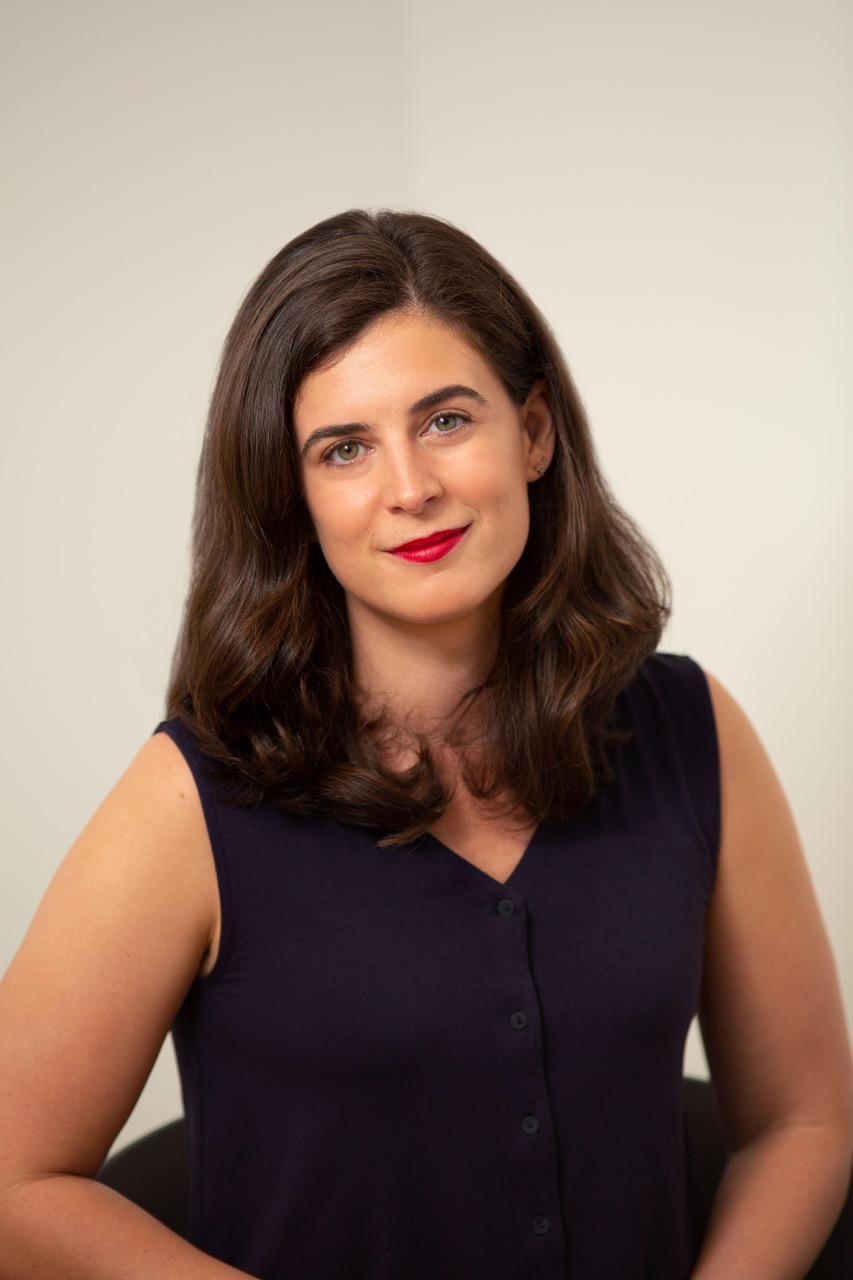 |
|
| Olivia Wolfgang-Smith (photo: Bianca Alexis) |
|
New York-based author Olivia Wolfgang-Smith received a 2024 NYSCA/NYFA Artist Fellowship in Fiction from the New York Foundation for the Arts. Her debut novel, Glassworks (2023), was longlisted for the Center for Fiction First Novel Prize. Her second, Mutual Interest (Bloomsbury, February 4, 2025; reviewed in this issue), is a remarkably fresh historical novel about families won and lost, love, envy, and betrayal.
Mutual Interest draws comparisons to iconic 19th-century authors like Edith Wharton as well as more contemporary figures like Hernan Diaz. How do you work with or against the conventions of social satire when writing?
In terms of Wharton, it's very kind of you to say there's a comparison with her as opposed to that I'm just obviously stealing from her, left and right, in a lot of different ways.
I often describe the book to people as a queer Edith Wharton pastiche. One of the main things is, yes, the social satire piece of her writing, which was huge for me. The seed of humor comes from the highly omniscient narrator who's in cahoots with the reader, laughing at the characters as an affectionate judgment of them and the choices they're making. It's a writing style that I like, and Wharton is definitely in the pantheon of that style.
A great source of pleasure in reading this book is the capable third-person narrative voice. What does this vantage point give you as a writer that others might not ?
It's so fun to just be able to say whatever you want. My first book is very closely aligned with one character's perspective at a time. It's so thrilling as a writer to have this narrator with a 10,000-foot view, who can dive into side characters, who can have a big tangent on geological history, or whatever. Because this book is set at the turn of the 20th century, and it was the convention to have this intrusive style of narrator, that's where I started. But I started enjoying the things that it let me do and the side characters it gave me access to, and the way it let me directly push back on the things that a character says or does--to argue against them a little, to hold them a little bit more accountable.
But it also just shaped the story profoundly, in that this book ended up being about webs of influence, and cause and effect, and the way things snowball and change in a way that is only possible because the narrator has context that the characters don't have.
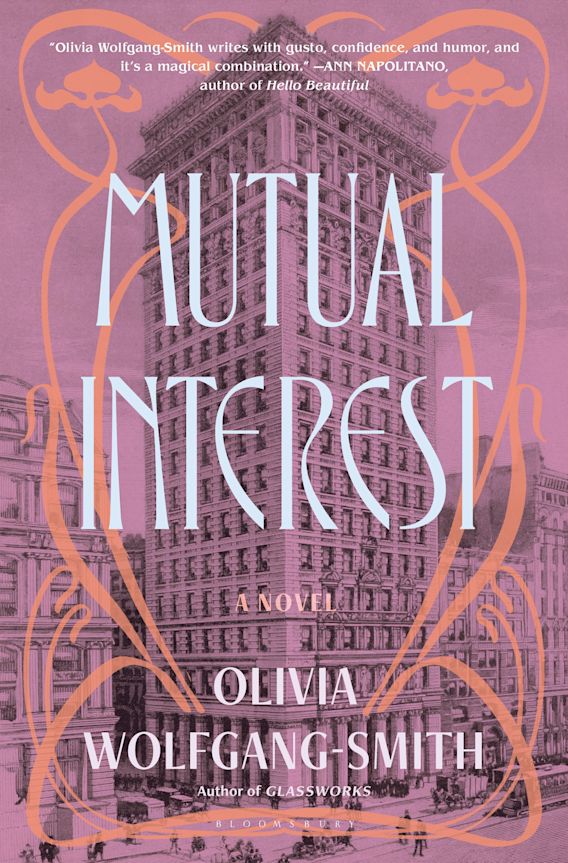 Does this time period have something specific to communicate to us now?
Does this time period have something specific to communicate to us now?
My entire reading life I've loved these novels of manners, the drawing-room love stories in these very buttoned-up ages that also have a lot of feeling--hormone-driven decisions being made within this very rigid world.
In America, at least, this is the iconic time period where a lot of these are set. I also live in New York City, and this is the most storied era of New York's past, in terms of self-mythologizing. There's a material culture that is preserved and iconic and kind of remixed and discussed everywhere. It's an era of huge technological and social change in a very exciting way.
It's also helpful for me, always, especially in turbulent times like right now, to remember that change is constant and has always been happening and will continue to happen. And that a lot of the times that we live through feel singular because it's the first time we're experiencing them. But the churn of all of this stuff is actually endless and ongoing.
So, it's helpful in that, specifically for New York City, there's always been this tension between relentless change and enthusiasm for change pulling against this mythic nostalgia for the past. Everyone in New York is always talking about how it was better X years ago, whatever that might mean.
What was it like investigating queer histories of that era?
Researching the history of queer community is honestly so fascinating, and it's such a therapeutic joy, because the more that you dig into and find out, the more validation you find in realizing people like this have always existed. No sane person actually thinks that queer people did not exist in the past, but it's just so lovely to see archival evidence of that. It was important to me to get tantalizing archival glimpses of characters who have either not often been present in literature or present only in a sort of fringe way.
In this particular case, these individuals are three spiky people who have a hard time finding community for their own reasons, so there's not as much of what socially functional people might have been doing at the same time.
What role does capitalism have in these characters' lives?
It's totally spot on to say that capitalism is like the water that these characters swim in, a force that's impossible not to define our lives in relationship to, whether we're trying to succeed within it or striving to disrupt it.
I've talked a lot about this book as being about people trying to figure out whether a job can love you back, what are the limits of defining your sense of self and your sense of happiness based on what you produce or achieve in the world, and how you define that.
I've obviously been thinking a lot about "rainbow" capitalism in writing this book and about identity politics--that if you are a queer person you can't possibly do something that would harm queer people
This is another part of what becomes possible when you have a high omniscient narrator: you can point out self-absorption in your characters, and name the things that they're not looking at. And I think that their relationships to capitalism is one of those things. --Elizabeth DeNoma, executive editor, DeNoma Literary Services, Seattle, Wash.
Book Candy
Book Candy
CrimeReads investigated "a brief history of literary forgers and forgery."
---
Guardian illustrator Tom Gauld's cartoon on "the writer's dog."
---
Merriam-Webster collected its top 10 sophisticated insults as well as top 12 sophisticated compliments.
A Forty Year Kiss
by Nickolas Butler
In A Forty Year Kiss, Nickolas Butler treats readers to an arresting, life-affirming novel that examines the hopes of second chance love. This passionate romance, however, is not all hugs and kisses, flowers and chocolates. This is a deeply affecting novel that brilliantly examines how life and the passage of time changes people--or does it?
A stunningly crafted opening scene set in a small-town watering hole--the Tomahawk Room in Chippewa Falls, Wis.--backbones the story. Sixty-four-year-old Charlie Fallon waits at the bar, fidgety, frightened, and anxious with "love-crazy hopes," for the arrival of Vivian Peterson, his 62-year-old ex-wife. After inheriting a house and farm nearby, the retired Charlie has moved back to his old stomping grounds from Albuquerque, N.Mex., and has been sprucing up the property bequeathed to him, a project that inspires him to take a leap and reconnect with Viv, whom he hasn't seen in 40 years.
Charlie has always loved Vivian, and for four decades she has lingered in his heart as he entered into other relationships and endured two other marriages that he admits failed through his own fault. Charlie and Viv had fallen head over heels when they were in their 20s--"kids driven by attraction. They were in love. In lust, more to the point." This led to their marriage in 1980. Yet, by 1984, the couple had divorced. After the split, Charlie got his life on track, building a successful and meaningful career working for the railroad. He also--rather inadvertently, through friends--reaped a financial windfall, investing wisely at the dawn of the Internet age. Yet in the last few years, Charlie--handsome, a smart dresser--has become haunted by Viv. "Haunt is a strong word, but that was the only word for it. Haunt. His memories of her. His regrets.... she'd never left his mind, not completely. You can't love someone the way they had loved each other and then just forget, forget everything."
Charlie's inheritance may have initiated his return to Wisconsin and his looking up Vivian, to see what had become of her life. But other factors came into play, too: his aging and retirement; his suffering with infirm family and loved ones, some of whom have died; and his witnessing friends making memories with families of their own--an aspect of life that escaped Charlie.
Viv's rationale in accepting Charlie's invitation for their reunion is simply curiosity and boredom--and not having been out on a date in a very long time. When Viv finally arrives at the Tomahawk Room to meet Charlie after four decades, she is still beautiful and upbeat. She's also nervous and emotionally armored. She is not sure how much information to disclose to this man she once loved and knew intimately.
Charlie had "frustrated her and eventually broke her heart." But after they finally divorced, she carried on with life. She became involved with a local mechanic and became pregnant with a daughter, Melissa, before they wed. The couple shared a rather staid, perfunctory marriage that endured great challenges; Viv was later widowed. Ensuing years left her to scrape by financially and share a ramshackle rental of a tiny house with her beloved daughter--now a single mom, "raising two young kids with no help from either of the fathers, and no savings or worldly possessions." While Vivian's life had become somewhat hardscrabble, her resilient, optimistic nature enabled her to appreciate that the richest rewards of her life were simple pleasures, centered on the close-knit bond shared with her nuclear family--however flawed.
From their first meeting, Charlie and Viv seem to pick up right where they left off, reminiscing about everything--their wedding, foods they used to enjoy, their regrets, their mistakes. Charlie disarms Viv by apologizing to her, outright, for the failure of their marriage. This admission leads them to share a passionate, evocative kiss. They quickly get swept up by the very best of what their romantic relationship once offered.
As the couple spends more time together, Viv falls under Charlie's spell of being impulsive, spontaneous, and fun. These qualities encourage her to trust him again. However, Viv soon learns how Charlie can still be smothering and overpowering, brooding and intense. And she makes it clear that her family is her top priority. The different ways they perceive and live life create conflict: self-sufficient and financially secure Charlie, enamored of the finer things of life, without kin, alone in the world; doting Vivian, pinching pennies and deeply enmeshed in the lives of her offspring. Butler probes how these differences challenge the dynamic of their relationship and their enduring love.
Memory comes to serve both the good and the bad. Old wounds, vices, and destructive patterns of behavior--along with invisible scars and startling secrets that have the power to reveal vulnerabilities--eventually drive a wedge between Charlie and Viv and threaten the dreamy idealism of their reclaimed romance.
As exemplified in his other books, Butler's stellar storytelling vividly maps the foibles and redemptive nature of the human condition--and how the past informs the present and the future. In A Forty Year Kiss, he presents an unforgettable fictional exploration of second chance love. Beautifully crafted dual narration, perfect pacing and surprising plotting--along with likable, multi-faceted characters--will pierce the hearts and minds of readers who will become totally invested in deeply resonant themes of true love, family, and mortality. --Kathleen Gerard
Small Towns and Forgotten Places
An Interview With Nickolas Butler
.jpg) |
|
| Nickolas Butler (photo: Jim Ivory) |
|
Nickolas Butler, a graduate of the Iowa Writers Workshop, is the author of the internationally bestselling novel Shotgun Lovesongs and an acclaimed collection of short stories, Beneath the Bonfire. He's also the author of a three-generation contemporary epic The Hearts of Men; Little Faith, an exploration of religion and belief; and a literary thriller, Godspeed. A Forty Year Kiss, Butler's fifth novel, is a passionate, emotionally complex love story that reunites 60-something lovers after four decades. It's available now from Sourcebooks Landmark.
Curious... why is your name "Nickolas" spelled with a "k" as opposed to an "h"?
I have no idea why my folks spelled my name the way they did. My brother, Alex, and I are named after the Romanovs. Apparently, back in the late '70s, there was a TV mini-series about the Russian Imperial family, and I suppose my parents were quite taken by it.
Aha. So romantic sagas--ingrained in the womb--might explain why you dedicate A Forty Year Kiss (in part) to the late filmmaker Nora Ephron?
I grew up watching Ephron movies. They celebrated the literary and thoughtful. Her dialogue was smart and sexy. Genuine. And her characters felt like people I would want to hang out with. I can't tell you the number of times I've seen When Harry Met Sally. For me, it's this cinematic touchstone from a time when I was trying to teach myself what good writing sounded like and how to build rich, complete characters.
That movie explored a lengthy time frame. Why a 40-year trajectory in A Forty Year Kiss?
There's certainly a lot at stake for the two lovers. They've spent four decades apart, and there won't be four decades in the future to spare. This builds an immediacy to the story.
So those 40 years dictated the shape of the novel?
Not immediately--the organization became clear through the writing. I knew I wanted to alternate points of view, and once I knew that, then I knew it wasn't any one character's story. This was a braided love story. Late in the editing process, I also realized that the novel could easily be organized into 40 chapters, echoing the title, and providing each of the main characters with equal narrative footing.
Did you draw from any other novels, love stories, to craft your own?
For many years, I kept encountering The Bridges of Madison County. I remember just picking up that novel one night and thinking, "Alright, what can I learn from this story?"
And the verdict?
It's a love story. But it's unconventional. Its form and organization are somewhat unexpected. It didn't just abide by a formula. I liked that.
Do you have a favorite literary love story?
The title that springs to mind is Our Souls at Night by Kent Haruf. It isn't a typical romance, either. And Haruf was always so, so compassionate to his characters.
That idea of "compassion" calls to mind that you also dedicate this novel to singer/songwriter Tom Waits, "the heart of Saturday night."
Tom Waits is an extremely underrated writer of love songs--unexpectedly tender valentines. He has a knack for writing about small towns and forgotten places--the same geography that interests me.
Midwest America.
Yes, I'm interested in landscape as a kind of character. And although I feel most at home writing about the Midwest (Wisconsin, in particular), I never want to be defined as strictly a writer who only writes about one place. I'm mostly interested in the plight of working-class characters.
You worked a host of jobs en route to achieving literary success. Do any stand out?
I liked being a coffee roaster--very romantic, sensual work; physically demanding. I traveled to Panama, Costa Rica, and El Salvador, visiting coffee farms, judging a contest, and meeting with farmers and mill workers. I've had a lot of strange work experiences, but all those experiences are reminders of what I have now, how good things are. I don't take my life for granted.
There's a wonderful scene in the book where characters discuss making a list of the "Top Five Things I Want for My Life." What are your top five wants?
1. To witness the establishment of our two children in their adult lives, hopefully happily; 2. Give at least as much (but hopefully more) to the world as I have received; 3. See a whale from a close distance; 4. Continue writing until I can't anymore; 5. Spend my final decades traveling, camping, and exploring with my wife of almost 20 years.
I truly hope those "wants" are granted. What's it been like, publishing six books?
I love what I do. Short of being the bullpen catcher for the Milwaukee Brewers or Minnesota Twins, I have my dream job, and I feel a tremendous amount of gratitude for the life I've built with my wife and family. I love writing. I love solving the problems that arise when crafting a novel. I like the deep focus. I like living a life that isn't really "normal." I don't go to an office. I don't really have a boss, or rather, I am my own boss.
And what does "the boss" do after finishing a book?
I'm generally not very productive. And this lack of productivity gnaws at me until I hit a kind of rock-bottom. Basically, I get disgusted with myself, and then I launch into another period of hyper-productivity and focus.
Has the "hyper-productivity and focus" phase returned?
Well, I just experienced a very tumultuous, very unorthodox summer in which I ran for Wisconsin State Assembly, eventually losing in a Democratic primary. All just to say, my life is only now returning to some sense of normalcy. I was about hip-deep into a new novel before I undertook that campaign, so the work now is to go back to that manuscript and hopefully dive right back in. --Kathleen Gerard
Rediscover
Rediscover: David Lodge
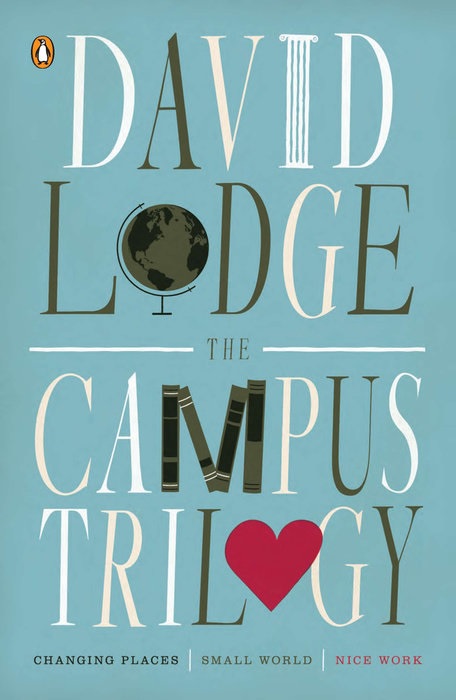 British author and critic David Lodge, who published more than two dozen books as well as TV scripts and plays, died January 3 at age 89, the Guardian reported. Lodge was shortlisted for the Booker Prize twice, first for Small World (1984) and later for Nice Work (1988), the final novels in his celebrated Campus trilogy.
British author and critic David Lodge, who published more than two dozen books as well as TV scripts and plays, died January 3 at age 89, the Guardian reported. Lodge was shortlisted for the Booker Prize twice, first for Small World (1984) and later for Nice Work (1988), the final novels in his celebrated Campus trilogy.
After graduating from University College London, Lodge entered national service for two years, an experience that inspired his second novel, Ginger, You're Barmy (1962). His first, The Picturegoers, was released in 1962, the same year he began teaching in the department of English at the University of Birmingham, where he worked until 1987. The university was the model for the fictional Midlands university of Rummidge, where his Campus trilogy was set, beginning with Changing Places: A Tale of Two Campuses (1975).
Lodge's other novels include The British Museum Is Falling Down, Out of the Shelter, How Far Can You Go?, Paradise News, and Therapy. His critical works include The Art of Fiction, Consciousness and the Novel, and The Practice of Writing. He also wrote the memoirs Quite a Good Time to Be Born, Writer's Luck, and Varying Degrees of Success.
Lodge was appointed a Chevalier de l'Ordre des Arts et des Lettres in 1997 and a Commander of the Order of the British Empire in 1998. In 1976, he was elected a fellow of the Royal Society of Literature.
In a tribute to Lodge, author Jonathan Coe wrote in the Guardian: "It's largely thanks to him, however, that the British comic novel remains in such good health.... It was precisely this eye for the absurd that made Lodge not just one of the funniest but--much more importantly--one of the most truthful of postwar British novelists."
Long-time editor Geoff Mulligan added that Lodge's work "appealed across the generations. He was touched when a student at a reading in Belfast announced that she loved his work, but then so did her mother and grandfather. For someone of his enormous achievements as an academic, novelist, playwright and script writer, he was always modest, kind, generous and a delight to be with."
Jonny Geller, his literary agent, observed: "His social commentary, meditations on mortality and laugh-out-loud observations make him a worthy addition to the pantheon of great English comic writers that links him to Wodehouse, Waugh, Amis and others."


